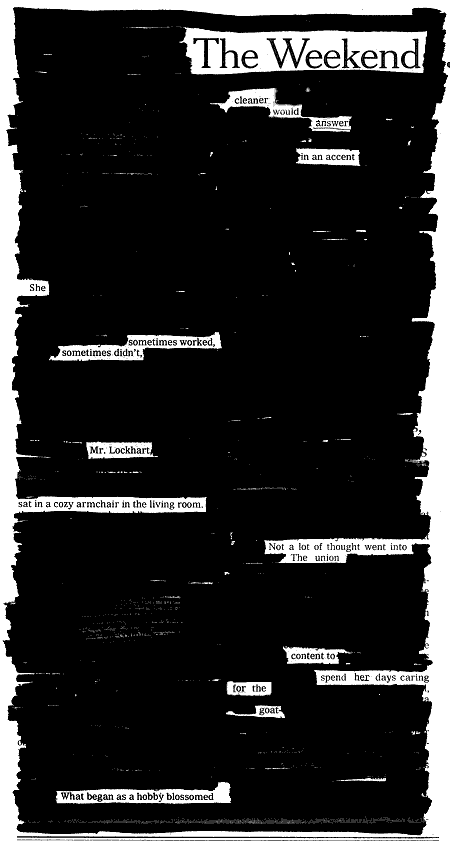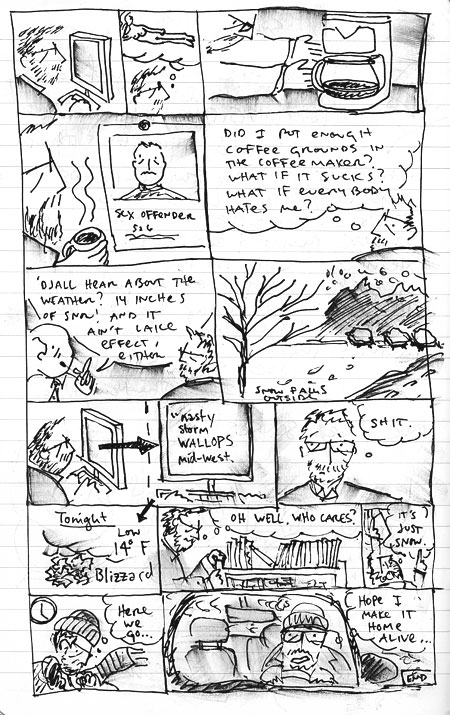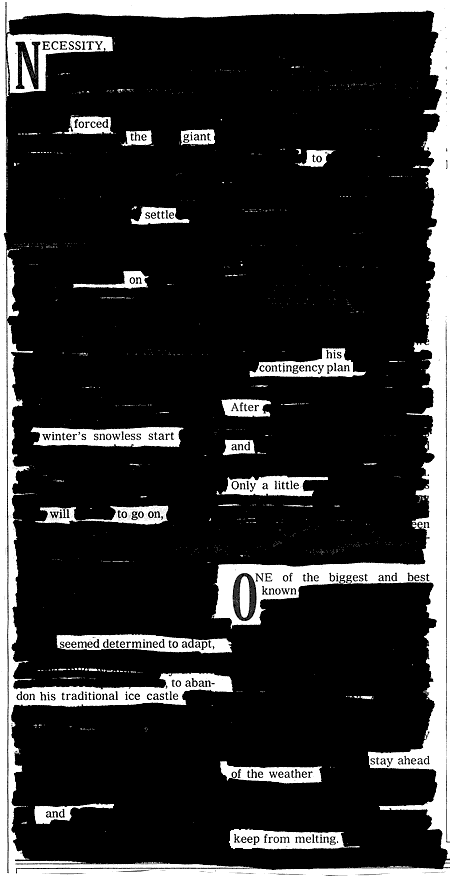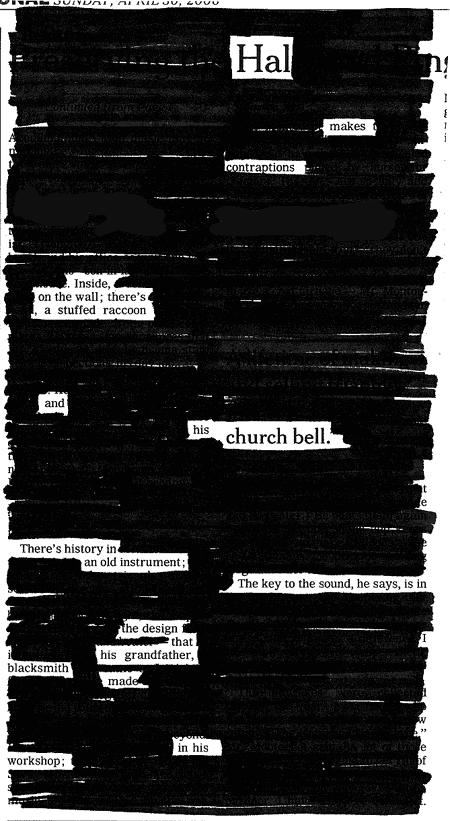I just had to post this: my best man and best friend, Corey Gillen, playing drums behind Gran Bel Fisher on Jimmy Kimmel Live! (I love the fact that they were on with Billy Ray Cyrus…)
THE WEEKEND CLEANER

meg thought this was scandalous
NASTY STORM WALLOPS MIDWEST

throwaway, sketched in the breakroom at work.
THE ICE GIANT RETREATS

I’d be lying if I said this wasn’t probably influenced by the Yeti in Zelda…
HAL MAKES CONTRAPTIONS

An old blackout poem pulled out of a notebook…
- ← Newer posts
- 1
- …
- 560
- 561
- 562
- 563
- 564
- …
- 635
- Older posts→